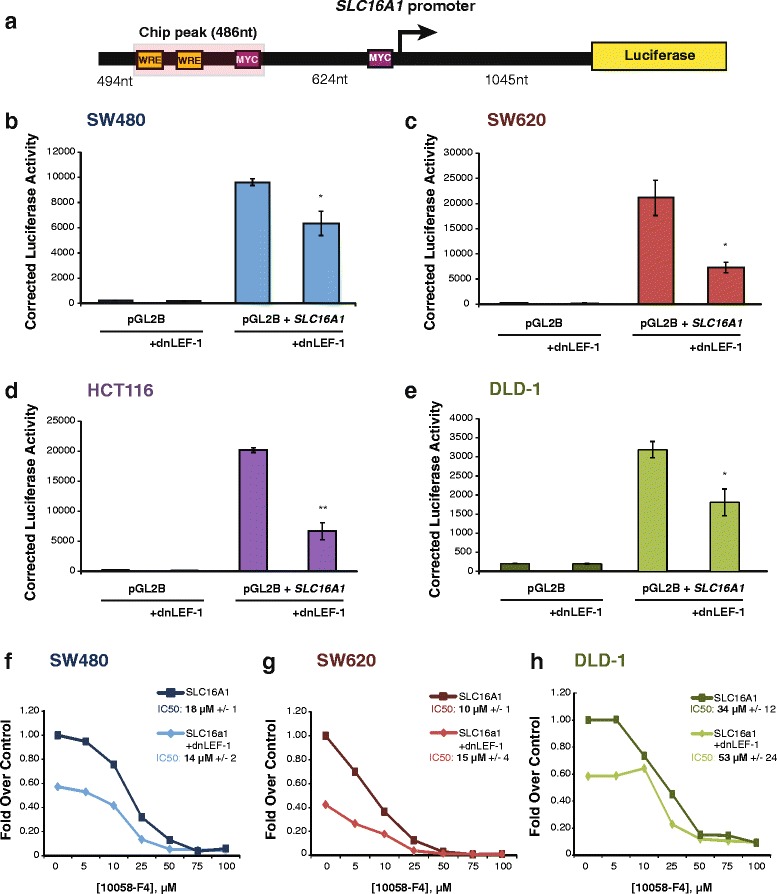Fig. 3.

Wnt directly targets the MCT-1/SLC16A1 promoter for regulation. A schematic (a) depicts a region of the endogenous SLC16A1 promoter (−1604, +1045) that was subcloned into a luciferase reporter plasmid. One regulatory region located approximately 624 nt upstream from the SLC16A1 transcription start site (+1) is occupied by dnTCF-1 and contains two putative Wnt response elements (highlighted in yellow). Previously identified c-Myc binding sites are also represented (in purple). Transient transfection analysis of three independent experiments in SW480 (b), SW620 (c), HCT116 (d), and DLD1 (e) cells shows that the endogenous promoter fragment increases transcription, and that co-expression of dnLEF-1 reduces activity of this promoter construct. Graphs shown represent the average of three trials (+/− SEM; *p value < 0.05; **p value < 0.01; ***p value < 0.001). Luciferase reporter activity in SW480 (f), SW620 (g), and DLD1 (h) cells shows that treatment with the Wnt inhibitor XAV939 (10 μM) and increasing concentrations of c-Myc inhibitor 10058-F4 decrease transcription of the SLC16A1 promoter additively, but not synergistically. A representative graph is shown of three replicates, with calculation of the IC50 and SEM from all three replicates for each cell line in the legend
